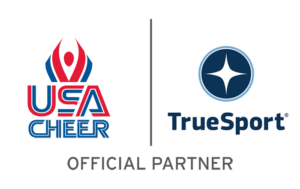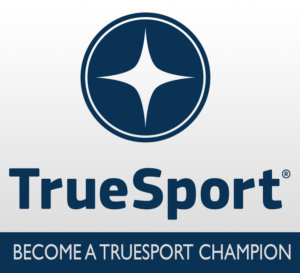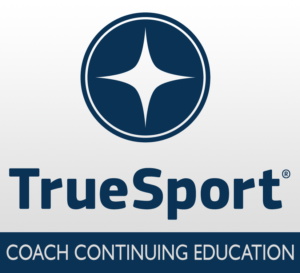Heat Illness: Keeping Your Athletes Safe
USA Cheer has partnered with TrueSport, to provide new educational tools to equip coaches, parents and young athletes with the resources to build life skills and core values for success in sports and in life. TrueSport, a movement by the U.S. Anti-Doping Agency, inspires athletes, coaches, parents, and administrators to change the culture of youth sport through active engagement and thoughtful curriculum based on cornerstone lessons of sportsmanship, character-building, and clean and healthy performance, while also creating leaders across communities through sport.

Heat Illness: Keeping Your Athletes Safe
Exercising in hot and humid weather is tough on all athletes, but kids face an elevated risk of heat illness due to inexperience.
Kids are more likely to continue exercising past the onset of mild heat illness either because they don’t recognize the symptoms or because they feel pressure to continue practicing or playing. As a result, it is crucial for parents and coaches to learn the signs and symptoms of heat illness, to be proactive in preventing it, and to have an action plan in case an athlete does develop heat exhaustion or heat stroke.
SIGNS AND SYMPTOMS OF HEAT ILLNESS
Heat illness begins with dehydration and progresses to heat exhaustion and then to heat stroke. Here’s what to look for:
Dehydration:
- Increased thirst
- Dry mouth
- Tiredness, lack of energy
- Reduced urine output
- Darker urine color
- Headache
Heat Exhaustion:
Heat exhaustion is a mild to moderate form of heat illness that can rapidly progress to heat stroke if appropriate action is not taken. Symptoms of heat exhaustion include:
- Dehydration
- Headache
- Profuse sweating or pale skin
- Loss of coordination, dizziness, fainting
- Nausea, vomiting, diarrhea
- Persistent muscle cramps
- Stomach cramps
Heat Stroke:
Heat stroke is a severe and potentially life-threatening form of heat illness that requires rapid intervention and immediate medical attention. Symptoms include:
- Potential loss of consciousness
- Central nervous system dysfunction, such as seizures, confusion, emotional instability, combativeness, or irrational behavior
- Headache, dizziness, and weakness
- Hot skin – with or without sweating
- Increased heart rate and rapid breathing
- Nausea, vomiting, or diarrhea
Some of the symptoms of heat exhaustion are similar to that of heat stroke, like headache, dizziness, nausea, and vomiting. Some of the key differentiators are hot skin and central nervous system dysfunction. Kids with heat exhaustion feel awful, but are typically cognizant enough to complain. In contrast, a child with heat stroke may not complain but instead be increasingly disoriented and irrational.
FACTORS THAT ELEVATE HEAT ILLNESS RISK
Some athletes are at greater risk than others of developing heat illness. The following factors make a person more vulnerable:
- Hot and humid environment
- Insufficient heat acclimatization
- Overweight/obesity
- Low cardiovascular fitness
- Poor hydration status
- Successive bouts of exercise with insufficient rest and rehydration
- Wearing excessive clothing/equipment
- Excessive duration or intensity of physical exertion
- Certain medications (consult child’s physician)
STRATEGIES FOR PREVENTING HEAT ILLNESS
The best remedy for heat illness is to avoid it altogether. Because kids and teens are more naïve about recognizing the signs and symptoms of heat illness, it is up to parents and coaches to create a youth sports environment that minimizes these risk factors and adequately monitors kids to detect signs of heat illness.
Heat illness is almost entirely preventable by modifying controllable factors, including those below:
- Ensure athletes are adequately hydrated before practice or competition.
- Make fluids readily available for all athletes. There is no benefit to restricting access to water; athletes do not adapt to dehydration.
- Remove equipment/clothing. As temperatures increase, practices should be modified to remove the need for equipment that increases heat retention, including helmets, shoulder pads, and restrictive clothing.
- Schedule practices and competitions during cooler portions of the day.
- Provide shade and water for dousing/wetting clothing during breaks.
- Institute proactive monitoring of fluid intake and athlete behavior. Talk to athletes during breaks, assign “hydration buddies” so athletes monitor and remind each other to stay hydrated.
- Increase frequency of breaks.
RECOMMENDATIONS FOR TREATING HEAT ILLNESS
Despite taking as many precautions as possible, it is possible that a young athlete will exhibit signs of heat exhaustion and/or heat stroke. Most sports camps, youth leagues, and coaching organizations have written and practiced action plans for heat-related illnesses, include the following recommendations:
For Heat Exhaustion
- Move athlete into shaded or air-conditioned area.
- Remove extra clothing and equipment.
- Cool athlete with cold water, fans and/or cold towels.
- Have athlete lie with legs raised above heart level.
- Encourage athlete to drink chilled water or sports drink if not nauseated or vomiting.
- If condition persists, seek medical attention.
For Heat Stroke
- Call emergency medical services, if not on-site already.
- Begin proactively cooling athlete before emergency medical personnel arrive.
- Remove extra clothing and equipment.
- Immerse athlete in cold water if possible. If immersion is not possible, use cold water, wet towels, fans, ice packs, etc. to aggressively cool athlete.
RETURN-TO-PLAY AFTER HEAT ILLNESS
Any young athlete who exhibits symptoms of heat exhaustion should not return to play until all symptoms of heat exhaustion and dehydration are gone. Generally speaking, that means taking the rest of the day off, and potentially the following day as well. Any young athlete who is treated for heat stroke should only return to play with a doctor’s approval.
Heat illness can be very serious, but it is also very preventable. Keeping kids well-hydrated all the time is the first line of defense. After that, it’s a matter of making the appropriate modifications to clothing, equipment, activities, and behaviors as temperatures heat up.
What is TrueSport?
The TrueSport Champion Network is a community of coaches, parents, program directors, and athletes who believe in the power of youth sport to build life skills and core values for success both on and off the field. Join TrueSport Champion Network to help promote the positive values of cheer, dance, and STUNT!
The TrueSport Coaching Education Program empowers coaches—the most significant influencers in young athletes’ lives—with a transformative learning opportunity to obtain the knowledge and resources to cultivate, champion, and uphold the rich promise and highest potential of sport.
Additional Training Modules from TrueSport
USA Cheer is proud to partner with USADA’s TrueSport® to bring relevant educational content to the Cheer and STUNT community in order to promote a positive youth sport experience. We are excited to provide access to TrueSport’s experts that take coaching beyond skills and help truly develop the overall athlete by building life skills and core values for success on and off the mat, sideline, field, and court.
Feel free to share these resources with your coaching staff, parents, or athletes!
About TrueSport
TrueSport®, a movement powered by the experience and values of the U.S. Anti-Doping Agency, champions the positive values and life lessons learned through youth sport. TrueSport inspires athletes, coaches, parents, and administrators to change the culture of youth sport through active engagement and thoughtful curriculum based on cornerstone lessons of sportsmanship, character-building, and clean and healthy performance, while also creating leaders across communities through sport.
For more expert-driven articles and materials, visit TrueSport’s comprehensive LEARN resource.
This content was reproduced in partnership with TrueSport. Any content copied or reproduced without TrueSport and the U.S. Anti-Doping Agency’s express written permission would be in violation of our copyright, and subject to legal recourse. To learn more or request permission to reproduce content, click here.



